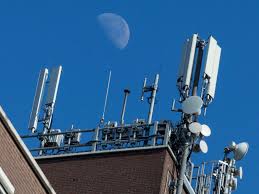Some nine out of 10 United States citizens regularly use the World Wide Web in one way or another, studies show. Most people get access to the Internet by paying Internet service providers such as Comcast or Spectrum monthly fees for unlimited access via in-home wireless routers. Many others log on to the World Wide Web through data plans offered by wireless service providers like Verizon, AT&T, Sprint, and T-Mobile.
Wireless carriers throughout the United States widely engage in a practice known as throttling, in which they restrict the bandwidth that subscribers are allotted. Put simply, this means that some people can’t surf the ‘net as quickly as they’re promised by their wireless carriers.
Most wireless service provider subscribers purchase a set amount of data that they can burn through each month before they’re cut off from high-speed Internet access. The majority of such plans draw a line in the sand at which users’ ability to freely browse the Internet at high speeds are throttled. While these plans’ cutoff limits are advertised by wireless service providers, subscribers often report that they don’t actually get as much high-speed Internet access as they’re promised.
The big four wireless service providers here in the United States, Verizon, AT&T, Sprint, and T-Mobile, are all guilty of engaging in broadband bandwidth throttling. After all, each of their many millions of subscribers agree to their terms and conditions that explicitly indicate that they reserve the right to throttle bandwidth. This throttling occurs without any recourse from market regulators, even if these wireless service providers don’t hold up to their end of the deal.
A recent study conducted jointly by researchers at Northeastern University and the University of Massachusetts, Amherst found that Verizon, AT&T, Sprint, and T-Mobile throttle Internet access speeds used to load videos all throughout the day, no matter how much congestion any of their wireless networks were facing.
The researchers spent roughly a year compiling and looking through data, utilizing the platform Wehe to get help from roughly 126,000 participants in 183 countries. Of the more than one million data points that were sampled throughout the past year, roughly 650,000 came from United States-based subscribers of services provided by Verizon, AT&T, T-Mobile, and Sprint.
Each of the four companies engages in their own breed of throttling strategy that’s unique from one another’s. AT&T never throttled videos streamed from Amazon Prime Video, though it did to the tune of 70 and 74 percent with videos streamed from Netflix and YouTube, respectively. T-Mobile throttled Amazon Prime Video streams 51 percent of the time, but never with Skype or Vimeo, for example.









